Introduction
Design & Appearance
{{section_header}}{{section.name}}{{/section_header}}
Body construction and design are quite similar to the P510, minus a tilting rear screen and electronic viewfinder. The rear control layout is also slightly different, and lacks both a control dial and a rotating dial. On top, the hardware mode dial is missing, hinting at this model's emphasis on simplicity. The camera will be available in black, as well as glossy blue and red.
Tour
{{section_header}}{{section.name}}{{/section_header}}




Ease of Use
{{section_header}}{{section.name}}{{/section_header}}
While the menu design and interface is typical Nikon, the selection of options has been drastically simplified in the default mode. Gone are the endless lists of shooting variables, replaced by only the most essential settings. The customizable User tab is also missing completely.
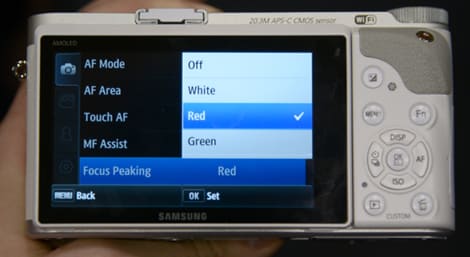

Size & Handling
{{section_header}}{{section.name}}{{/section_header}}
Somehow the L810 feels less cramped than the P510, perhaps due to the smaller lens barrel. It's still a little bit awkward and the heavy glass throws off balance, so this will likely be a camera used with two hands.
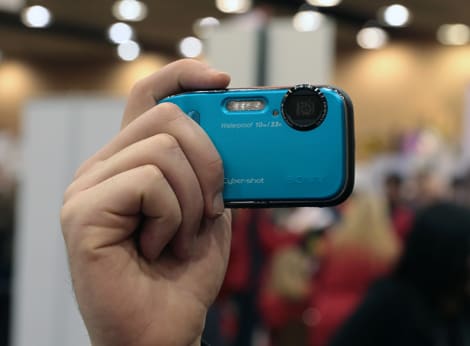
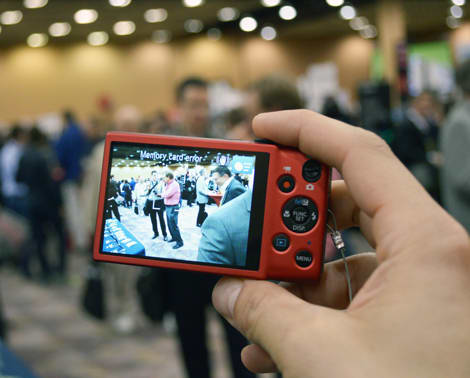
Modes Overview
{{section_header}}{{section.name}}{{/section_header}}
The P510's nice hardware mode dial has been replaced by a virtual mode selector. There are only four options: Full Auto, Scene mode, Digital Effects, and Program Auto.

Auto Mode
{{section_header}}{{section.name}}{{/section_header}}
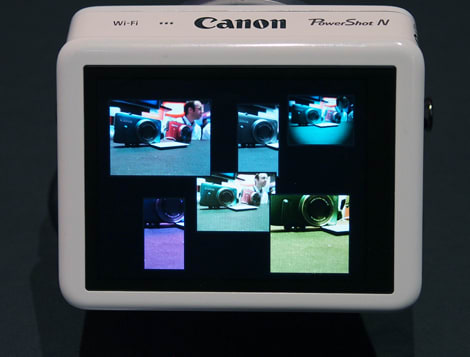
Movie Mode
{{section_header}}{{section.name}}{{/section_header}}
The L810 is capable of capturing video in either 720p or 480p, both at 30 frames per second. We've come to expect Full HD 1080p from most new cameras, but the limitation isn't shocking from this budget-minded model. An HDMI output terminal is available on the left side of the body, and this will be helpful for easy streaming to an HDTV. All videos are encoded in H.264 with AAC stereo audio.
Drive/Burst Mode
{{section_header}}{{section.name}}{{/section_header}}
The camera's burst mode functionality is also fairly limited. At maximum resolution the processor can only manage 1.2 shots per second, for as many as 4 shots in a row. Pretty poor, but again this price point dictates sacrifice. Multi-shot 16, a mosaic feature, is also available here, along with the Best Shot Selector.
Playback Mode
{{section_header}}{{section.name}}{{/section_header}}
The most common image review features can be found in the L810, such as grid display, EXIF information, and magnification. This camera also features some light in-camera editing, in the form of crop, dynamic range compensation, rotate, soften, and resize.
Picture Quality & Size Options
{{section_header}}{{section.name}}{{/section_header}}
Maximum resolution is 4608 x 3456 pixels. RAW encoding is not available and we could find no user-definable JPEG compression settings.
Focus
{{section_header}}{{section.name}}{{/section_header}}
The L810 uses contrast detection TTL autofocus, which can be configured to either Center or Face Priority focus areas. Normal minimum focusing range is 1 foot 8 inches, however the Macro close-up mode allows locks as close as 1cm. Manual focus is not supported.
Exposure & Metering
{{section_header}}{{section.name}}{{/section_header}}
The lens aperture has a range of f/3.1-5.9. Pretty standard, though this cannot be controlled manually. Shutter speed is also quite average, ranging from 1/1500 - 1 second, or 4 seconds when using the Fireworks scene mode. Exposure compensation may be adjusted manually out to +/- 2 stops in 1/3-stop intervals.
ISO
{{section_header}}{{section.name}}{{/section_header}}
ISO sensitivity extends from 80 to 1600. An extra 3200 level would've been average, and given this lens' unimpressive aperture, we don't expect the L810 to be a particularly strong low light performer.
White Balance
{{section_header}}{{section.name}}{{/section_header}}
Aside from automatic and manual white balance modes, five basic presets are available in the menus: Cloudy, Daylight, Flash, Fluorescent, and Incandescent. Direct color temperature entry in degrees Kelvin is not possible.
Image Stabilization
{{section_header}}{{section.name}}{{/section_header}}
We're happy to see this inexpensive camera did opt for lens-shift vibration reduction. With such a long zoom ratio, image quality really would've suffered if Nikon went with a digital method only.
Other Controls
Lens & Sensor
{{section_header}}{{section.name}}{{/section_header}}
Sadly Nikon apparently could not spare the expense of a CMOS sensor, so this camera uses a CCD model. Resolution is still 16.1 megapixels though, so hope is not lost when it comes to image quality. The lens is also very impressive, extending all the way out to 26x and making this one of the most aggressively-priced ultrazooms on the market today.

LCD
{{section_header}}{{section.name}}{{/section_header}}
Although the LCD monitor is a fixed-position model, its resolution is nice and high at 921,000-dots. The screen is covered with an anti-reflective coating and 5 levels of brightness adjustment are available. The frame offers approximately 95% coverage while shooting, 100% during playback.

Flash
{{section_header}}{{section.name}}{{/section_header}}
The built-in pop-up flash bulb is deployed by a manual release button on the left-hand side of its enclosure. The emitter is rated effective out to 16 feet, making it a relatively weak flash.

Jacks, Ports & Plugs
{{section_header}}{{section.name}}{{/section_header}}
Underneath a port cover on the left panel of the body, you'll find two terminals: an HDMI port and a USB port. The HDMI interface can be set to output in 480p, 720p, 1080i, or automatic; but 1080p output is not supported.
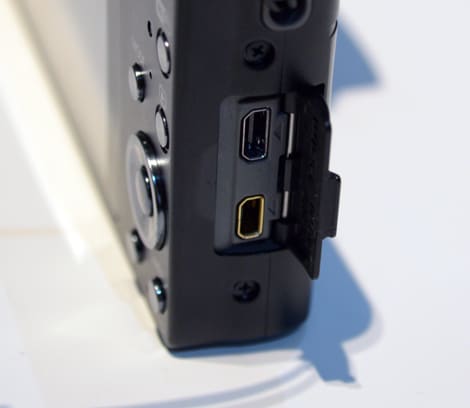
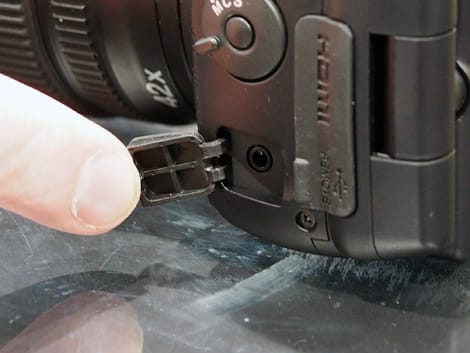
Battery
{{section_header}}{{section.name}}{{/section_header}}
The L810 is powered by 4 AA batteries, and is rated to 300 shots on a single charge with alkaline, or an impressive 740 shots with lithium. Nikon also markets their own AA-size battery and charger combination, the EN-MH2, and this package is rated to 450 shots.

Memory
{{section_header}}{{section.name}}{{/section_header}}
SD, SDHC, and fast SDXC memory cards are supported. The camera also comes with 50 MB of internal memory, though this is only enough for a few shots.

Conclusion
With an extremely aggressive price point and some big numbers on the spec sheet, we imagine the Coolpix L810 could sell pretty well. 26x is an amazing zoom ratio for a sub-$300 camera, and as long as image quality is better than, say, the Kodak Easyshare Max, that low investment could go a long way. Plus, whether we approve or not, customers seem to be drawn to big megapixel sensors, even if this one is a CCD.
Handling of the L810 is great, better in fact than the P510. And the same glossy body that we loved so much on the P510 makes a return, this time in blue as well. But make no mistake, this is a simplified camera, best suited to those who want to take their long zoom shots without having to think about it too much. Much of the P510's flexibility is gone entirely from this smaller cousin. A tendency that often goes hand-in-hand with AA-powered devices, which certain users will appreciate.
We're dying to bring the L810 into the lab, if only to find out exactly how much image quality Nikon was able to squeeze into such an affordable model. Stay tuned.
{{product.vanity}}
Sample Photos
{{section_header}}{{section.name}}{{/section_header}}
Specs
{{manufacturer_specs_table}}
Meet the tester
Chris was born and raised less than ten miles from our editorial office, and even graduated from nearby Merrimack College. He came to Reviewed after covering the telecom industry, and has been moonlighting as a Boston area dining critic since 2008.
Checking our work.
Our team is here to help you buy the best stuff and love what you own. Our writers, editors, and experts obsess over the products we cover to make sure you're confident and satisfied. Have a different opinion about something we recommend? Email us and we'll compare notes.
Shoot us an email